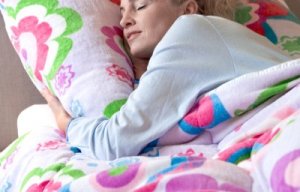
New biofunctional fabrics prove effective against dust mites
Tests are being carried out on ensuring the efficiency of textiles in reducing house dust mites and mite allergens or providing an effective barrier against them.

11th May 2015
Innovation in Textiles
|
Boennigheim
The Hohenstein scientists from the department for Hygiene, Environment & Medicine are testing the efficiency of textiles in reducing house dust mites and mite allergens or providing an effective barrier against them.
On average a person spends 8 out of 24 hours asleep. Over a year, this is almost 3000 hours spent in bed, or rather, on a mattress, which provides perfect conditions for mites, with an average temperature of 25 degrees, humidity of up to 70%, as well as human skin flakes, on which the white arachnids feed. However, as well as in mattresses, mites are also found in bedding, upholstered furniture and carpets.
Between 4 and 5 million Germans suffer from an allergy to house dust mites, which is caused not by the mite itself, but by their faeces. Stirred up faeces particles reach the individual's mucus membranes via the respiratory tracts and, if the individual is allergic, they trigger typical symptoms including a runny nose, streaming or itchy eyes and, in severe cases, even asthma and shortness of breath.
Tests are being carried out on the impermeability of bedding and encasings against mite faeces. Encasings are special mattress covers, which are used to avoid contact with allergens. The challenge for the manufacturers is to design the casings in such a way that they form a physical barrier created from the fabric structure and the laminate network. This must also be sufficiently resistant to mite faeces when the sleeping person turns over during the night.
The special feature of the encasing test carried out by the Hohenstein Institute is that real mite faeces from house dust mites are used. Surfaces, seams, and zip fasteners are applied with real mite faeces and the strain during sleep is reconstructed through pressure and friction.

The quantity of mite faeces allergens, which manage to get through the material during the simulated use, is measured. The value for this test must not exceed two micrograms (corresponds to the sensitization threshold for persons allergic to house dust mites).
The test for resistance (barrier effect) against mite faeces allergens is a DAkkS accredited service and will be carried out exclusively by the Hohenstein Institute across Germany using real mite faeces.
To help persons with allergies to make their decisions, tested materials are awarded the Hohenstein quality label House Dust and Mite Barrier. This may be particularly interesting for the health service and the hotel and hospitality industry.
A further DAkkS-accredited test by the Hohenstein Institute is the examination of the long-term impact of textiles and chemicals that should restrict the development of house dust mites. This long-term test is carried out in accordance with standard NF G39-011.
House dust mites are applied to the test samples and controls. After two population cycles, i.e. 6 weeks, under optimum conditions for the mites, the number of living mites is either counted directly using a stereo microscope or, in the case of 3D test samples, the allergen content is determined.
Products that are very effective at preventing the growth of the mite population receive the certificate Anti Dust Mite. Both quality labels, House Dust and Mite Barrier and Anti Dust Mite, can be easily combined with other quality labels from the Hohenstein Institute.

Business intelligence for the fibre, textiles and apparel industries: technologies, innovations, markets, investments, trade policy, sourcing, strategy...
Find out more